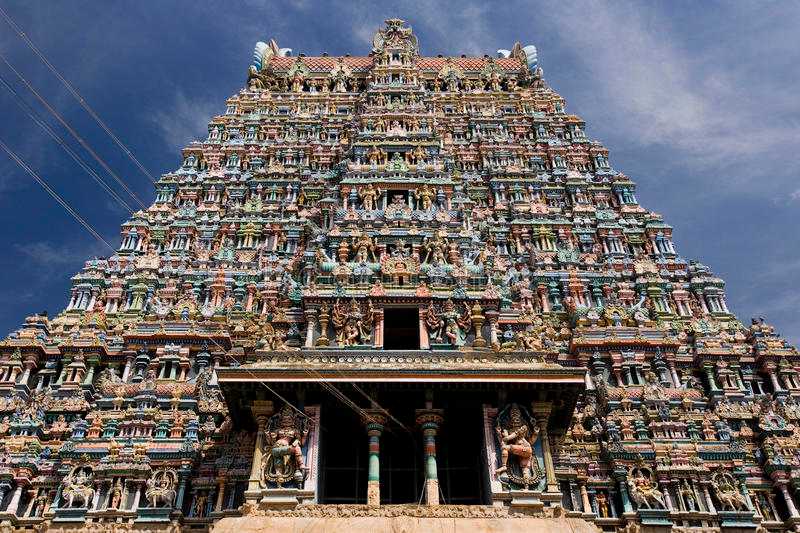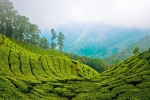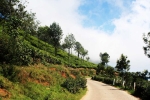"The Lotus City"
Madurai Tourism
Madurai is one of the oldest cities of India located inTamil Nadu. It was ruled by Pandya kings for the longest time in its history and is constructed in the form of a lotus.
Madurai is considered to be the cultural capital of Tamil Nadu. The place has a great cultural heritage and strong mythological history to be passed on to the coming generations. The reason most people visit the city is the Meenakshi Temple, dedicated to the goddess Meenakshi with a sanctum for her consort, Sundareshwarar. Thiruparankundram is one of the important old temples dedicated to Lord Muruga(Karthikeya) and is located on a hillock approximately 8 km from the city.Gandhi Museumhouses Gandhi's bloodstained dhoti and some other artefacts. The city is known for its lively and bustling markets. Shopping here is fun and affordable. Another thing Madurai is popular for its amazing street food. Heritage walks are conducted throughout the day. Those who wish to know more about the freedom struggle, though, will be interested in the extensive text housed here. Tamil speakers and long-term visitors may be interested in the classes and workshops offered in subjects as diverse as t'ai chi and local herbs.
Download Madurai PDF Guide >
What's Great?
Breath-taking temples and monuments. Scrumptious cuisine . The locals are extremely helpful and hospitable.
What's not so Great?
The public transport system is unreliable. Language may prove to be a barrier as the locals do not speak Hindi and rarely speak English.
For Whom
Those want to go on a pilgrimage, people interested in architecture and foodies.
Madurai - The Temple City
The city has more than 10 major temples and over 20 smaller ones. Ideal for a pilgrimage. Temples built in different dynasties like the Cholas, Pandyas and Nayaks are found here. The Meenakshi Amman temple is the most famous one. Not only are they spiritual centres, they are examples of magnificent architecture.
History of Madurai
The city of Madurai is engraved with a glorious history which dates back to the Sangam period of pre - Christian era, a time when Megasthenes visited the place in 3rd century BC. A swift fragrance of restoration surrounds the air of this present day trading centre, glorifying its demolished structures. According to Sangam literature, this place used to be the capital of Pandyan dynasty. Roman historians Ptolemy, Pliny the Younger and Greek geographer Strabo have mentioned this place in their respective works. The end of Sangam age brought Madurai under the rule of Kalabhra dynasty who were defeated by Pandyas around 590 CE who was overthrown by Chola dynasty in the 9th century. In 1378 CE the city came under the ruling of Vijayanagara and became independent in 1559 CE under the Nayaks. In 1801, the city was under the regime of East India Company which caused the independence movement to start in the region. Mahatma Gandhi led the freedom march in Madurai and is said to have adopted his loin clothing starting from this city.
Etymology
The city derived its name from the word Marutham which alludes to the type of landscape in Sangam age. It is also known by various other names such as "Koodal" which means an assembly of scholarly people, "Naanmadakoodal" for the four major temples the city is surrounded by "Thiru Alavai", a name used by three prominent Narayana's who inscribed compositions on Shiva. The word ?Matiray? has also been used in several documentations which refers to an old Tamil word meaning ?walled city?.
Architecture of Madurai
Built around the central location of Meenakshi Amman Temple, the city imparts aesthetics of architecture in all its establishments. In Tamil Classic records, the temple is portrayed as the central formation of a lotus where the concrete roads connecting the rest of the city are denoted as its petal. One can observe the detailed structural design in many of its buildings, pilgrims, temples and community halls which were developed during the colonial era. An aerial view of the city shows the quadrangular streets emerging from the temple boundary, dividing the city into several square-shaped regions. Each of these squares retains their traditional name of Aadi, Chittirai, Avani-moola and Masi corresponding to the Tamil names of months and festivals associated with it. The 19th-century urbanisation is evident in the colonial buildings, fringe streets and random scribblings or marks made all over the city as a mark of its history.
Itinerary
Day 1 -Reach Madurai by morning - noon. Have authentic South Indian breakfast/lunch . Visit the Thirumalai Nayakar Palace in the evening. Do try out the immensely popular Jigarthanda, which is a South Indian version of falooda.Day 2 -Visit the Koodal Alagar temple, St.Mary's Cathedral
and other major places of worship. Have a South Indian thali meal for lunch. Visit the Meenakshi Amman temple in the afternoon. All temples are extremely crowded during the weekends. Try the delicious kothu parotta for dinner.Day 3 -Try to visit Pazhamudhircholai ( one of the 6 abodes of Lord Muruga ) if possible. Check out the Vaigai Dam. Experience the evening market in the city.
Restaurants and Local Food in Madurai
Madurai is often referred to as the food capital of Tamil Nadu, given the huge variety in styles, cuisines, genres and sizes that it offers. In Madurai, you can taste the most authentic of traditional delicacies as well as indulge in fast food, Bengali, Italian, Chinese and North-Indian cuisines. Also, the food is lip smacking all though its streets to the elaborate restaurants.The local delicacies includeParuthi paal, jigarthanda, panangkarkandu paal and chettinadu varieties like appam, kuzhi paniyaram, etc.as well as beverages likeParuthi, Jigarthandaas well as the popularFilter coffee. Other than these, find local favorites from all overBengal Fish curry, Pizzas, Chaats, Fish and Chips, Gulab Jamuns, Samosas, Butter Chicken, Tandoori Chickenand lots more.
View 7 Restaurants in Madurai >>
Oct-Maris the best time to visit Madurai
Madurai has hot and dry climate for most part of the year. The best time for visiting the place is from October to March as it is an enjoyable time for temple visits, sightseeing and vacationing.
Weather in Madurai
Loading...
Madurai in Monsoon (June-August)
The city experiences heavy rainfall during these months as the South-west monsoon crosses the region during this time. This is the perfect time to visit Madurai for people who love greenery and the lush natural surroundings.
Madurai in Winter (December-February)
This is generally regarded as the best season to visit. The weather is very pleasant, with moderate to light rainfall. The temperature ranges between 20 and 29 degrees Celcius. However, hotel prices may climb up as this is the peak of the tourist season.
Madurai in Summer (March-July)
March- July is when temperatures here are at its peak. It ranges between 23 and 34 degrees Celcius and is extremely hot during this time. Avoid visiting during this time if you have a low tolerance for high heat.
Monthly Weather in Madurai
Month
Avg. Minimum (°C)
Avg. Maximum (°C)
January
22
31
February
21
33
March
24
35
April
27
39
May
27
38
June
27
38
July
27
36
August
27
37
September
26
36
October
25
36
November
24
32
December
23
31
Events in Madurai
Chithirai Festival
18th April - 3rd May
Legend has it that Lord Kallazhaga having missed his sister's wedding was furious and through the Vagai River, makes his journey home. The Chithrai festival marks this journey by processions throughout the streets of Madurai. The wedding is marked by a huge celebration and grand decorations are put up all over the city.
Comments on Madurai
Post Your Comment


 Meenakshi Amman Temple
Meenakshi Amman Temple Alagar Koil
Alagar Koil Vaigai Dam
Vaigai Dam Thirumalai Nayakar Mahal
Thirumalai Nayakar Mahal Kodaikanal
Kodaikanal Munnar
Munnar Ooty
Ooty Pondicherry
Pondicherry Alleppey
Alleppey Wayanad
Wayanad